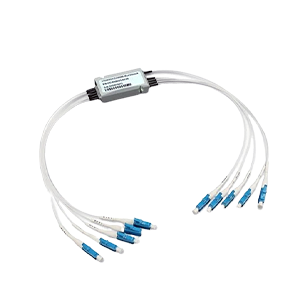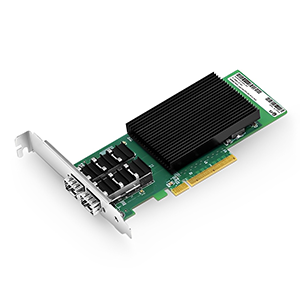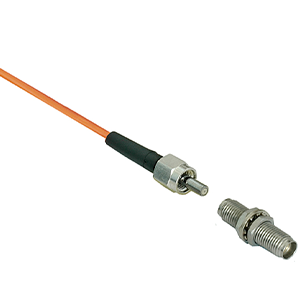Welcome to this blog! I will discuss with you the advantages and disadvantages of Wavelength Division Multiplexing (WDM) technology over Time Division Multiplexing (TDM) technology. We will review the basic principles and working methods of WDM and TDM technologies, and gain an in-depth understanding of the advantages of WDM technology over TDM technology in terms of bandwidth utilization, flexibility, fault tolerance, and cost-effectiveness.
In today’s information age, the demand for high-bandwidth and large-capacity data transmission continues to grow, placing higher requirements on the performance of communication networks. In this context, WDM technology, as an advanced optical transmission technology, has become one of the important solutions to meet these needs.
In contrast, TDM technology has some limitations in transmission efficiency and resource utilization. This article will focus on the advantages of WDM technology over TDM technology, including high capacity, flexibility, fiber resource utilization, compatibility, etc., aiming to illustrate the importance and application advantages of WDM technology in modern communication networks.
Basic principles of WDM and TDM technology
Wavelength Division Multiplexing (WDM) and Time Division Multiplexing (TDM) are two commonly used multiplexing technologies. They adopt different principles and working methods when transmitting multiple signals.
Basic principles of WDM technology:
WDM technology uses different wavelengths to multiplex multiple optical signals so that they can be transmitted simultaneously in the same optical fiber. Specifically, WDM systems use wavelength division multiplexers to separate optical signals of different wavelengths and then combine them into a single optical fiber. At the receiving end, a wavelength demultiplexer is used to separate the signals of each wavelength and restore them to the original data stream. In this way, multiple wavelength channels can transmit different data signals simultaneously, achieving high-capacity and high-bandwidth data transmission.
Basic principles of TDM technology:
TDM technology achieves multiplexing by dividing signals in time. In a TDM system, each signal is assigned a fixed time slot, and these time slots cycle continuously at fixed time intervals. At the transmitting end, different signals are placed in their respective time slots in chronological order and then transmitted through the transmission medium (such as cable or optical fiber). At the receiving end, based on the time slot information, each signal can be accurately restored and restored to the original data stream. TDM technology can realize parallel transmission of multiple signals, and each signal is transmitted in turn within a certain time interval, thus achieving multiplexing.
The main difference between WDM technology and TDM technology is the multiplexing method of data signals. WDM technology transmits optical signals of multiple wavelengths simultaneously, and each wavelength channel can carry independent communication signals; while TDM technology divides signals in time, and each signal is transmitted in different time slots. These two technologies have different applications and advantages in data transmission. WDM technology is more prominent in high-capacity and large-bandwidth requirements, while TDM technology has more advantages in applications with higher real-time requirements.
Increased bandwidth utilization and capacity
WDM technology has obvious advantages over TDM technology in terms of bandwidth utilization and capacity increase. The following are the advantages of WDM technology:
1. Improved bandwidth utilization:
-
Transmit multiple signals simultaneously: WDM technology can improve bandwidth utilization by transmitting optical signals of multiple wavelengths at the same time. Each wavelength channel can carry independent communication signals and be transmitted independently in the optical fiber without interfering with each other. In contrast, TDM technology can only transmit one signal in each time segment, so within the same time interval, WDM technology can transmit more signals simultaneously to achieve higher bandwidth utilization.
-
Maximize utilization of optical fiber resources: WDM technology can fully utilize the bandwidth of optical fiber. Traditional single-channel optical fiber transmission can only utilize a small part of the bandwidth of the optical fiber, while WDM technology transmits signals of multiple wavelengths simultaneously, making full use of the entire bandwidth of the optical fiber. This allows the network to transmit more data traffic based on the same optical fiber, greatly improving bandwidth utilization efficiency.
2. Capacity increase:
-
High-capacity transmission: Because WDM technology can transmit multiple signals at the same time, it can achieve high-capacity data transmission. Each wavelength channel can carry independent communication signals, so WDM technology can add the capacity of multiple channels to achieve a greater total capacity. In contrast, TDM technology can only transmit one signal per time segment, so its total capacity is limited by the number of time segments.
-
Flexible capacity configuration: WDM technology has flexible capacity configuration capabilities. By adding or subtracting wavelength channels in the optical fiber, capacity can be flexibly adjusted according to actual needs. This flexibility allows WDM technology to adapt to growing data transmission needs and provide scalable network solutions.
WDM technology has obvious advantages over TDM technology in terms of bandwidth utilization and capacity increase. By transmitting multiple signals simultaneously, WDM technology improves the bandwidth utilization of optical fiber communication systems and enables high-capacity data transmission. This makes WDM technology an important technology to meet the growing demand for data transmission, and plays an important role in areas such as high-capacity networks and long-distance transmission.
Flexibility and scalability
WDM technology has advantages over TDM technology in terms of flexibility and scalability. The following are the advantages of WDM technology:
1. Flexibility:
-
Flexible configuration at the wavelength level: WDM technology can perform flexible capacity configuration according to actual needs. The capacity of the network can be adjusted by adding or subtracting wavelength channels. This flexibility enables the network to dynamically adjust according to different transmission requirements to adapt to the data transmission requirements in different application scenarios.
-
Multi-protocol support: WDM technology can transmit signals of multiple different protocols at the same time. Different wavelength channels can be used to transmit different protocols, such as optical fiber communication, video transmission, data storage, etc. This flexibility enables WDM technology to provide efficient transmission solutions in a variety of application scenarios.
2. Scalability:
-
Capacity scalability: WDM technology has good capacity scalability. By adding more wavelength channels, the capacity of the network can be expanded to meet growing data transmission needs. This scalability makes WDM technology ideal for handling increasing data traffic.
-
Long-distance transmission capability: WDM technology has excellent performance in optical fiber communications and can achieve long-distance transmission. Since the transmission loss of optical signals in optical fibers is small, WDM technology can cover longer distances on optical fibers and meet a wide range of communication needs.
In contrast, TDM technology has certain limitations in flexibility and scalability. The capacity of TDM technology is fixed in time segments, and each time segment can only transmit one signal. Therefore, capacity expansion of TDM technology requires adding more time segments, which may require more complex scheduling and management mechanisms. WDM technology can adjust capacity by adding or reducing wavelength channels, making it more flexible and scalable.
Fault tolerance and reliability
WDM technology has advantages over TDM technology in terms of fault tolerance and reliability. The following are the advantages of WDM technology:
1. Fault tolerance:
-
Independent transmission: Multiple signals in WDM technology are transmitted independently, and each wavelength channel can carry independent communication signals. Therefore, when a fault occurs in the WDM system, it will only affect the signal of a specific wavelength and will not affect other wavelength channels. This independent transmission feature makes WDM technology highly fault-tolerant. Even if a certain wavelength channel is affected by a fault, other wavelength channels can still transmit data normally.
-
Redundant backup: WDM technology can improve fault tolerance by introducing redundant backup. By introducing backup wavelength channels or backup optical fiber links into the system, when the main channel or link fails, it can automatically switch to the backup channel or link to ensure the continuity and reliability of data transmission.
2. Reliability:
-
Fault isolation: Since multiple signals in WDM technology are transmitted independently, when a fault occurs, the fault will only affect the signal of a specific wavelength. This fault isolation feature makes the impact of the fault smaller, making it easier to locate and eliminate faults, thus improving the reliability of the system.
-
Anti-interference ability: WDM technology has good anti-interference ability in optical fiber transmission. Since each wavelength channel is independent of each other and uses technologies such as optical isolation to reduce interference between signals, the WDM system can effectively resist external interference and provide reliable transmission performance.
In contrast, TDM technology has some limitations in fault tolerance and reliability. Since multiple signals in TDM technology are transmitted within the same time segment, when a fault occurs, it may affect signal transmission in the entire time segment. This means that a single failure can cause data loss or disruption for an entire time slice. In WDM technology, since multiple signals are transmitted independently, faults will only affect signals of specific wavelengths and will not have a chain effect on other wavelength channels.
Cost-effectiveness and resource utilization
WDM technology has advantages over TDM technology in terms of cost-effectiveness and resource utilization. The following are the advantages of WDM technology:
1. Cost-effectiveness:
-
Fiber utilization: WDM technology can improve fiber utilization by transmitting multiple signals in the fiber. Each wavelength channel can carry independent communication signals, so multiple signals can be transmitted in the same fiber, reducing the number of fibers required. In contrast, TDM technology requires independent time segments for the transmission of each signal, so more fiber may be needed to meet the same communication needs. By reducing the number of optical fibers, WDM technology can reduce the cost of fiber deployment and maintenance.
-
Equipment cost: WDM technology can reduce the number of required equipment through multiplexing of optical fibers. In a WDM system, multiple signals can be transmitted through the same optical fiber, so fewer optical fiber interfaces and transmission equipment are required. In TDM technology, each signal requires an independent time segment and corresponding equipment, which may lead to more equipment requirements and higher equipment costs. By reducing the number of devices, WDM technology can provide a more cost-effective solution.
2. Resource utilization:
-
Spectral resource utilization: WDM technology can effectively utilize spectral resources. By multiplexing signals of different wavelengths, WDM technology can make full use of different wavelength channels in the optical fiber transmission medium and improve the utilization of spectral resources. In contrast, TDM technology allocates a fixed time segment to each signal and cannot effectively utilize unused parts of spectral resources. By improving the utilization of spectral resources, WDM technology can achieve higher data transmission capacity and better network performance.
-
Network resource utilization: Since multiple signals in WDM technology are transmitted independently, each wavelength channel can be used for different communication needs. This means that WDM technology can allocate and adjust network resources more flexibly to adapt to different application scenarios and transmission needs. In contrast, the network resource allocation of TDM technology is fixed, and each time segment is allocated to a specific signal. Therefore, the resource utilization of TDM technology may be limited and it cannot flexibly adapt to changing needs. By improving resource utilization, WDM technology can utilize network resources more effectively and provide more efficient data transmission services.
WDM technology has obvious advantages over TDM technology in terms of cost-effectiveness and resource utilization. By reducing the number of optical fibers and equipment costs, and improving the utilization of spectrum and network resources, WDM technology can provide more cost-effective and sustainable communication solutions. This makes WDM technology one of the important technologies in modern communication networks and has been widely used.
Application cases and practical applications
WDM technology is widely used in the communications field. The following are some practical application cases and explain its advantages over TDM technology:
-
Long-distance transmission: WDM technology has significant advantages in long-distance transmission. WDM technology enables high-capacity data transmission by multiplexing multiple signals at different wavelengths in optical fiber. In contrast, the transmission capacity of TDM technology is limited by time slices. In long-distance transmission, WDM technology can reduce the number of optical fibers and equipment costs, while providing greater transmission bandwidth and lower signal attenuation, thereby achieving efficient data transmission.
-
Data center interconnection: Data centers require high-speed, high-capacity data transmission to support large-scale data processing and storage. WDM technology is on the rise It is widely used in data center interconnection. By leveraging the high-bandwidth transmission capabilities of WDM technology, data centers can achieve fast and reliable inter-server communication. In contrast, TDM technology can be limited by bandwidth limitations and equipment complexity. WDM technology can meet the high bandwidth requirements of data center interconnection and provide higher transmission efficiency and reliability through the multiplexing characteristics of optical fiber.
-
Optical communication backbone network: WDM technology is a key technology in the optical communication backbone network. Optical communication backbone networks need to carry a large amount of data traffic and provide high-speed, reliable transmission. WDM technology can multiplex signals of different wavelengths to achieve high-density optical fiber transmission. In contrast, TDM technology may require more optical fibers and equipment to meet the same transmission needs. WDM technology provides higher transmission capacity and better network performance by improving the utilization of optical fiber and network resources.
-
Fiber to the home (FTTH): WDM technology is widely used in fiber to the home (FTTH) networks. FTTH networks need to transmit high-speed broadband signals to end users to meet the growing broadband demand. WDM technology can realize optical fiber sharing for multiple users by transmitting signals of multiple users on different wavelengths in the optical fiber. In contrast, TDM technology may require independent time slices and devices to be assigned to each user. WDM technology provides cost-effective FTTH solutions by reducing fiber count and equipment costs, and supports higher user density and bandwidth requirements.
Summary:
Thank you for reading this blog. I hope you have a deeper understanding of the advantages of Wavelength Division Multiplexing (WDM) technology over Time Division Multiplexing (TDM) technology. WDM technology improves the bandwidth utilization and data transmission capacity of optical fiber communication systems by transmitting optical signals of multiple wavelengths simultaneously. In contrast, TDM technology can only transmit one signal in each time segment, limiting bandwidth utilization efficiency and capacity increase.
WDM technology has a wide range of application cases in the communications field, and is especially suitable for areas with high bandwidth requirements, data centers, and long-distance transmission. By choosing our products, you will receive advanced WDM technical support to meet your communication needs and enhance your business success. Let us work together to build an efficient and reliable communication network!
WDM FAQ
1.Increased data capacity: WDM allows multiple data streams to be transmitted simultaneously over different wavelengths of light, significantly increasing the data capacity compared to TDM, which divides the bandwidth into time slots.
2.Flexibility and scalability: WDM provides greater flexibility and scalability as additional wavelengths can be added to accommodate future growth, whereas TDM is limited by the number of available time slots.
3.Higher transmission rates: WDM can support higher transmission rates because it allows for parallel transmission of multiple data streams, whereas TDM relies on sequential transmission over time slots.
4.Reduced latency: WDM offers lower latency compared to TDM because data streams can be transmitted concurrently, eliminating the need for time slot synchronization and reducing delays.
5.Enhanced network efficiency: WDM maximizes the use of optical fiber capacity by multiplexing multiple data streams onto a single fiber, resulting in improved network efficiency and cost-effectiveness compared to TDM, which requires dedicated time slots for each data stream.
WDM achieves higher data capacity by utilizing different wavelengths of light to carry multiple data streams simultaneously over a single fiber. Each data stream is assigned a specific wavelength, allowing for parallel transmission. In contrast, TDM divides the available bandwidth into time slots, sequentially transmitting data streams one after another, which limits the data capacity.
1.Increased data capacity and transmission rates
2.Flexibility and scalability for future growth
3.Lower latency and reduced synchronization requirements
4.Improved network efficiency and cost-effectiveness
5.Compatibility with high-speed optical fiber networks
1.Complex equipment: WDM systems require more complex and sophisticated equipment, such as wavelength-selective switches and multiplexers, which can be more expensive to deploy and maintain compared to TDM equipment.
2.Higher initial setup costs: The initial setup costs for WDM networks can be higher due to the need for specialized components and optical transceivers capable of transmitting and receiving multiple wavelengths.
3.Limited interoperability: WDM systems from different vendors may have limited interoperability due to variations in wavelength assignments, channel spacing, or transmission protocols. This can restrict flexibility in network design and upgrades.
4.Complexity in troubleshooting: Troubleshooting WDM systems can be more complex than TDM systems due to the involvement of multiple wavelengths and the need for specialized testing equipment.
1.Legacy systems: TDM is commonly used in existing legacy systems where upgrading to WDM would require significant infrastructure changes and investments.
2.Voice communication: TDM is often used for traditional voice communication services, such as traditional telephony networks, where the data rates are relatively low and the simplicity of TDM is sufficient.
3.Low-capacity applications: TDM may be suitable for applications that require low data capacity or have limited bandwidth requirements, where the cost and complexity of WDM are not justified.





